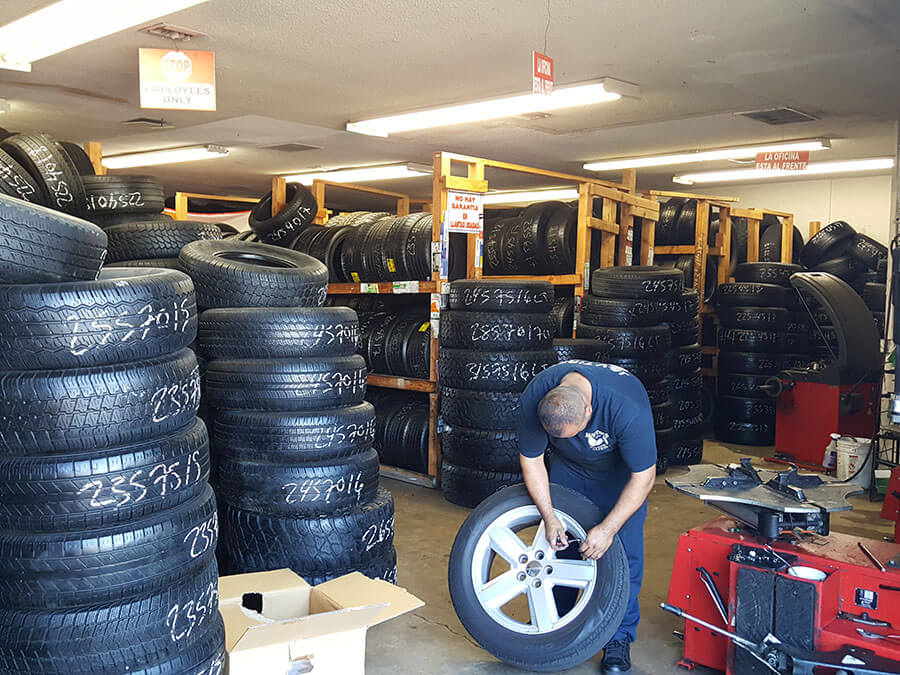Don't Lose Out on Mopar Tire Service Specials: Budget Friendly Upkeep Packages
Wiki Article
Tire Service: The Influence of Climate Condition
When it comes to making certain optimum efficiency and security on the roadway, comprehending the influence of weather condition problems on tire solution is essential. In this conversation, we will certainly check out the detailed relationship in between weather problems and tire service, losing light on the relevance of weather-specific tire maintenance methods and factors to consider.Warm and Tire Efficiency
When revealed to high temperature levels, tires experience changes in efficiency that can substantially impact automobile safety and handling. The warmth generated from long term driving or heat conditions triggers the tire rubber to soften, bring about lowered tread life and increased wear. As the rubber ends up being softer, the tire's hold on the road reduces, influencing braking ranges and total grip. In severe instances, extreme heat can even trigger tire blowouts, posing an extreme safety and security threat to the car and its passengers.Additionally, high temperature levels can increase the procedure of tire aging, causing the rubber to wear away faster. This can result in fractures, bulges, and various other kinds of damage that compromise the architectural stability of the tire. To reduce the impacts of heat on tire efficiency, chauffeurs must on a regular basis inspect their tire pressure, revolve tires to make sure even wear, and check for any kind of indications of damage. Additionally, utilizing tires particularly developed to withstand high temperature levels can aid maintain optimum performance and security when driving.
Cold Weather Results
Winter conditions can have a substantial effect on tire efficiency and safety and security. As temperature levels decrease, tire rubber can solidify, bring about lowered traction on icy or snow-covered roadways. In cold weather, tires might also shed air pressure more rapidly, which can affect taking care of and gas effectiveness. Additionally, chilly temperatures can create tire sidewalls to stiffen, increasing the risk of damage from pits or various other roadway risks.
To minimize the effects of winter on tires, it is essential to routinely examine tire stress and inflate them to the producer's advised degrees. Making use of winter season or all-season tires created for winter problems can likewise boost traction and grasp on icy or snowy roads - discount tires morris il. Correct tire maintenance, including regular evaluations for wear and damages, ends up being a lot more vital during chillier months to make certain optimal efficiency and security
Rainy Conditions Impact
During stormy conditions, tire efficiency and security can be considerably influenced by the damp roadway surfaces and reduced exposure. The tread pattern of tires plays a crucial duty in preserving traction on wet roadways. Tires with damaged footsteps are more prone to hydroplaning, where a layer of water accumulates between the tire and the roadway surface area, resulting in loss of traction. To combat this, drivers ought to frequently examine their tires for appropriate step deepness and think about purchasing tires especially made for damp conditions.

Snow and Tire Safety
When driving in snowy conditions, having the ideal tires can make a substantial distinction in safety and efficiency. Winter season tires are created with unique rubber substances and walk patterns to offer much better traction on snow and ice contrasted to all-season tires.In enhancement to utilizing winter season tires, it is crucial to guarantee they are effectively inflated. Winter can create tire stress to drop, affecting traction and handling (morris tire and alignment). On a regular basis examining and keeping the appropriate tire stress is important for optimal performance in snowy problems

Weather-Related Tire Upkeep
When confronted with various weather, correct tire upkeep becomes a critical element of car safety and efficiency. Weather-related tire maintenance encompasses a series of practices targeted at guaranteeing optimum tire function and durability in different weather situations. One key facet of weather-related tire maintenance is tire pressure regulation. Changing temperatures can trigger tire pressure to vary, impacting traction and fuel efficiency. Frequently adjusting and examining tire pressure according to maker suggestions is essential for safe driving in transforming weather conditions. In addition, tire step deepness plays a considerable role in managing various weather condition elements. Tires with sufficient walk deepness offer far better grip on go to these guys damp or icy roads, minimizing the risk of skidding or hydroplaning. Checking tire walk on a regular basis and changing tires when step wear reaches a certain depth is crucial for keeping grip and stability in adverse weather condition. By prioritizing weather-related tire maintenance, vehicle drivers can enhance security, improve car efficiency, and prolong the life-span of their tires.Verdict
In conclusion, weather problems have a substantial impact on tire efficiency and safety and security (mopar tire service specials). From warmth impacting tire pressure and put on to cool weather condition reducing traction, it is vital to take into consideration the weather condition when keeping and making use of tires.In this conversation, we will certainly explore the detailed partnership between climate problems and tire solution, losing light on the importance of weather-specific tire maintenance methods and factors to consider.

Report this wiki page